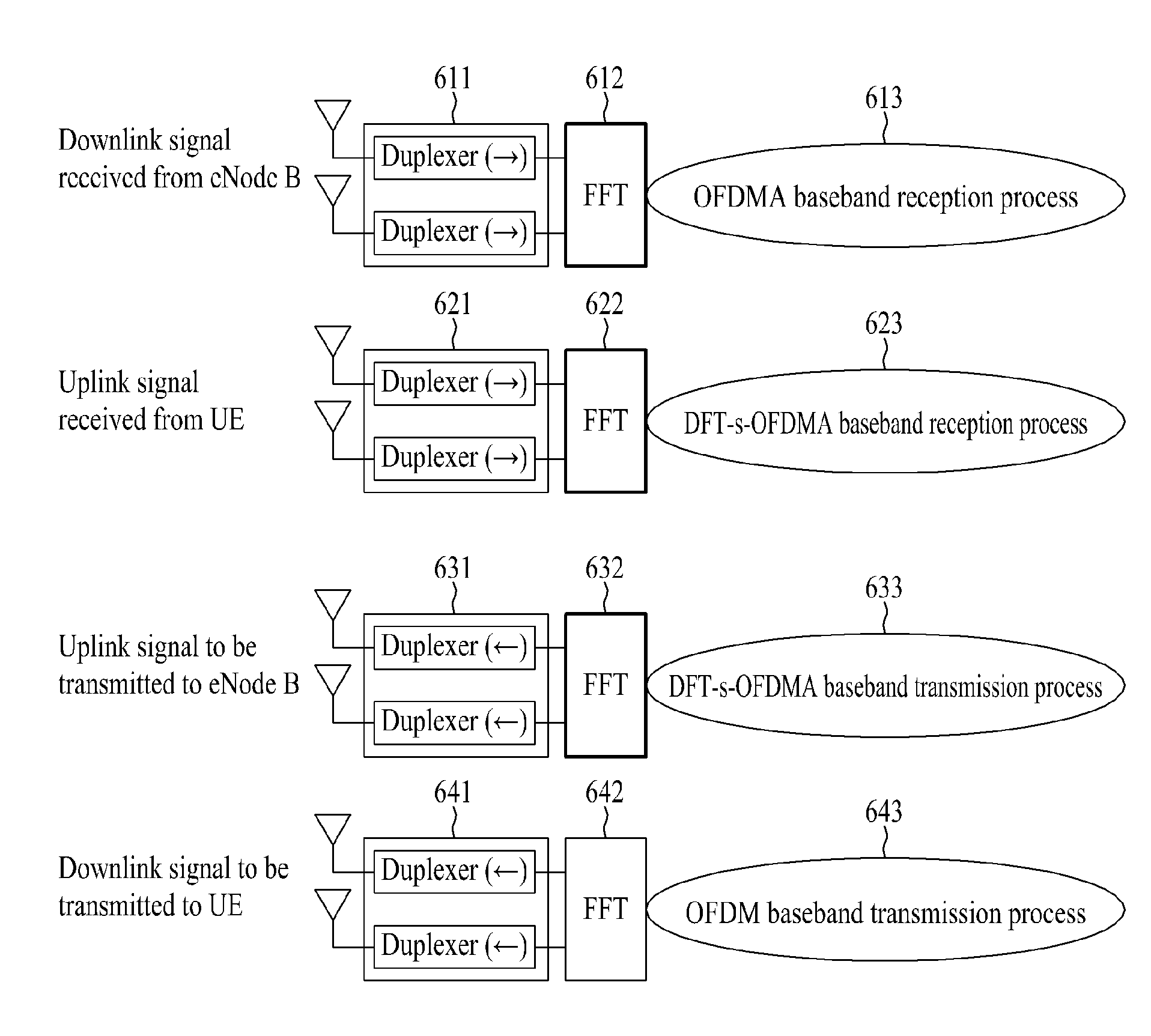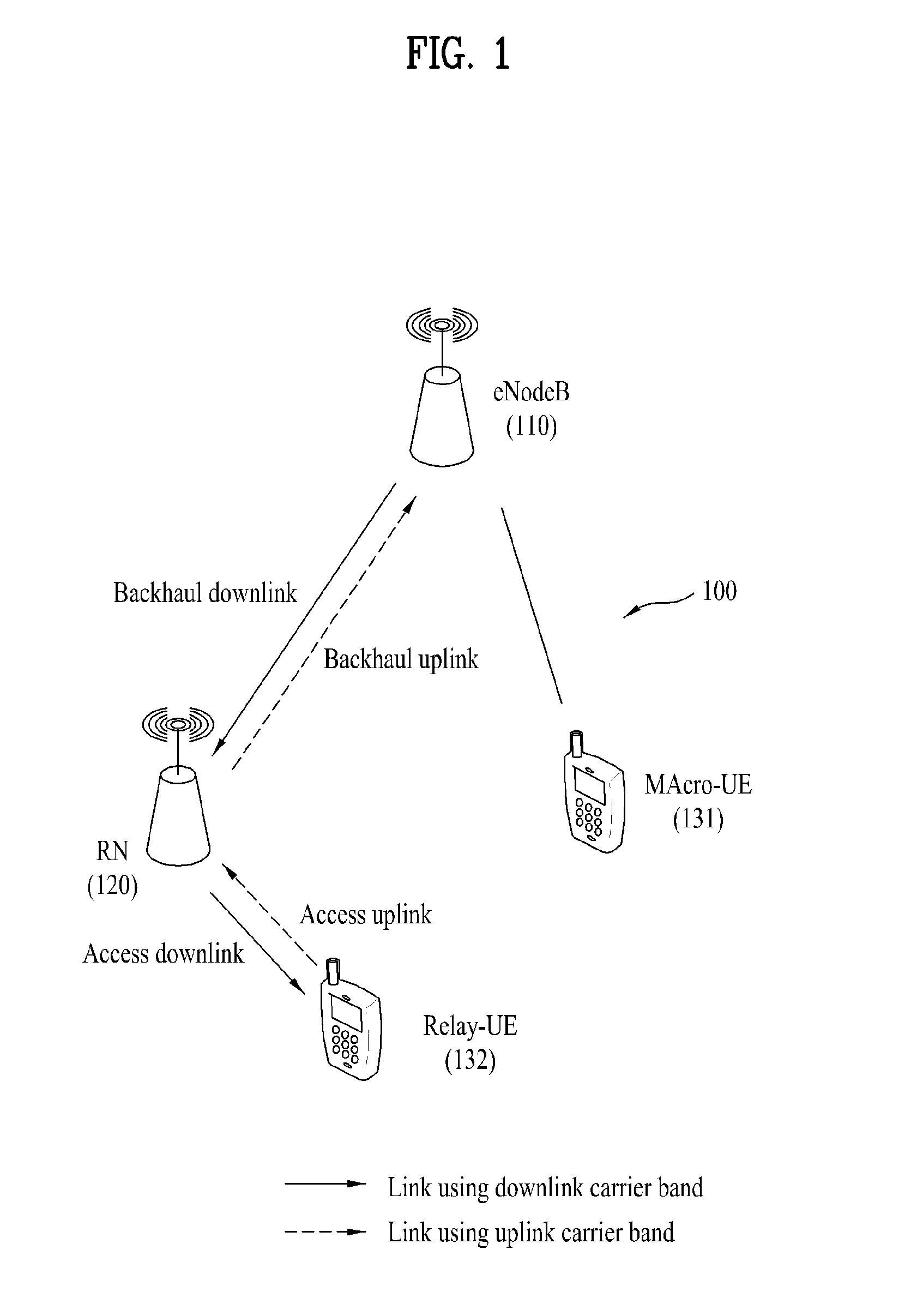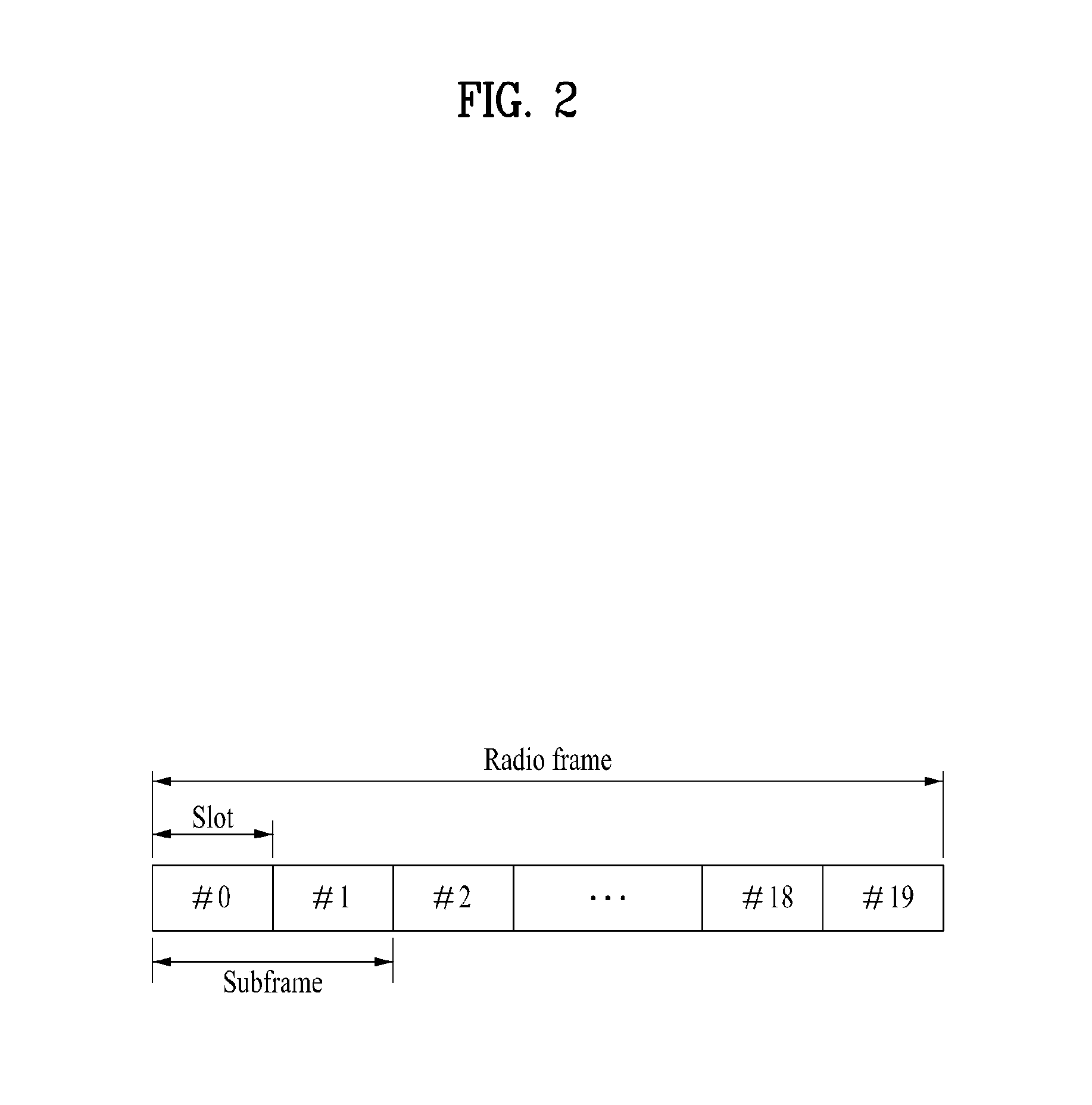Method in which a relay allocates carriers on a backhaul link and an access link in a multi-carrier wireless communication system
a wireless communication system and relay technology, applied in multiplex communication, orthogonal multiplex, frequency division multiplex, etc., can solve the problem of not being able to allocate a frequency having a broad band all around the world, and achieve efficient multiplexing, efficient configuration and assignment, and the effect of preventing transmission and reception collision between the backhaul link and the access link
- Summary
- Abstract
- Description
- Claims
- Application Information
AI Technical Summary
Benefits of technology
Problems solved by technology
Method used
Image
Examples
embodiment 1
[0178]Referring to FIG. 9, it is assumed that backhaul and access downlink subframes are configured on DL CC0, backhaul, backhaul and access uplink subframes corresponding to the backhaul and access downlink subframes are configured on UL CC0, and backhaul downlink subframes 911, 912, 913 and 914 or backhaul uplink subframes 921, 922, 923 and 924 are allocated every 10 ms in relation to the above-described HARQ timing.
[0179]Meanwhile, without introduction of RNs, a synchronous non-adaptive HARQ operation with an 8-ms period (a Round Trip Time (RTT) of 8 ms) as defined in the legacy LTE system is performed for a legacy UE (e.g. an LTE Release-8 UE). For example, upon receipt of an access uplink signal from a UE on UL CC0 (931), an RN transmits an HARQ feedback on DL CC0, 4 TTIs later (912). The downlink subframe 912 is an MBSFN subframe in which an HARQ feedback can be transmitted to the UE on a PHICH included in the first two OFDM symbols. If the HARQ feedback is a NACK signal, the ...
embodiment 2
[0188]Referring to FIG. 10, backhaul downlink subframes 1011, 1012, 1013, 1014 and 1015 on DL CC0 or backhaul uplink subframes 1021, 1022, 1023, 1024 and 1025 on UL CC0 are allocated basically every 8 ms, taking into account the 8-ms HARQ timing. However, subframes that cannot be allocated as MBSFN subframes (subframes #0, #4, #5 and #9) among the backhaul downlink subframes are shifted (subframes #4 and #9 are shifted to subframes #3 and #8, respectively and subframes #5 and #0 are shifted to subframes #6 and #1, respectively). Therefore, the backhaul link subframe allocation pattern has a 40-ms period (5 subframes are allocated at an interval of 7, 8 or 9 subframes during the duration of 40 ms). The backhaul uplink subframe pattern has an 8-ms period.
[0189]For example, if the subframe 1031 or 1032 of DL CC0 is allocated for access downlink data (PDSCH) transmission, an HARQ feedback may be received from a UE on UL CC0 in response to the transmitted access downlink data, 4 TTIs lat...
embodiment 3
[0197]A scheme for carrier hopping in a backhaul subframe pattern will be described as another method for solving the problem described before in Embodiment 2, with reference to FIG. 11. Backhaul subframes may be allocated to different CCs (CC hopping) according to a backhaul subframe pattern having a predetermined period. For instance, although backhaul subframes are allocated only to DL CC0 and UL CC0 during the duration of 40 ms in the backhaul subframe allocation with the period of 40 ms illustrated in FIG. 10, subframes 1111, 1113 and 1115 are allocated to DL CC0 and subframes 1112 and 1114 are allocated to DL CC1 through carrier hopping, while subframes 1121, 1123 and 1125 are allocated to UL CC0 and subframes 1122 and 1124 are allocated to UL CC1 through carrier hopping, during 40 ms in the embodiment of the present invention.
[0198]According to Embodiment 3, for example, if the subframe 1131 of DL CC0 is allocated for access downlink data (PUSCH) transmission, an HARQ feedbac...
PUM
 Login to View More
Login to View More Abstract
Description
Claims
Application Information
 Login to View More
Login to View More - R&D
- Intellectual Property
- Life Sciences
- Materials
- Tech Scout
- Unparalleled Data Quality
- Higher Quality Content
- 60% Fewer Hallucinations
Browse by: Latest US Patents, China's latest patents, Technical Efficacy Thesaurus, Application Domain, Technology Topic, Popular Technical Reports.
© 2025 PatSnap. All rights reserved.Legal|Privacy policy|Modern Slavery Act Transparency Statement|Sitemap|About US| Contact US: help@patsnap.com



